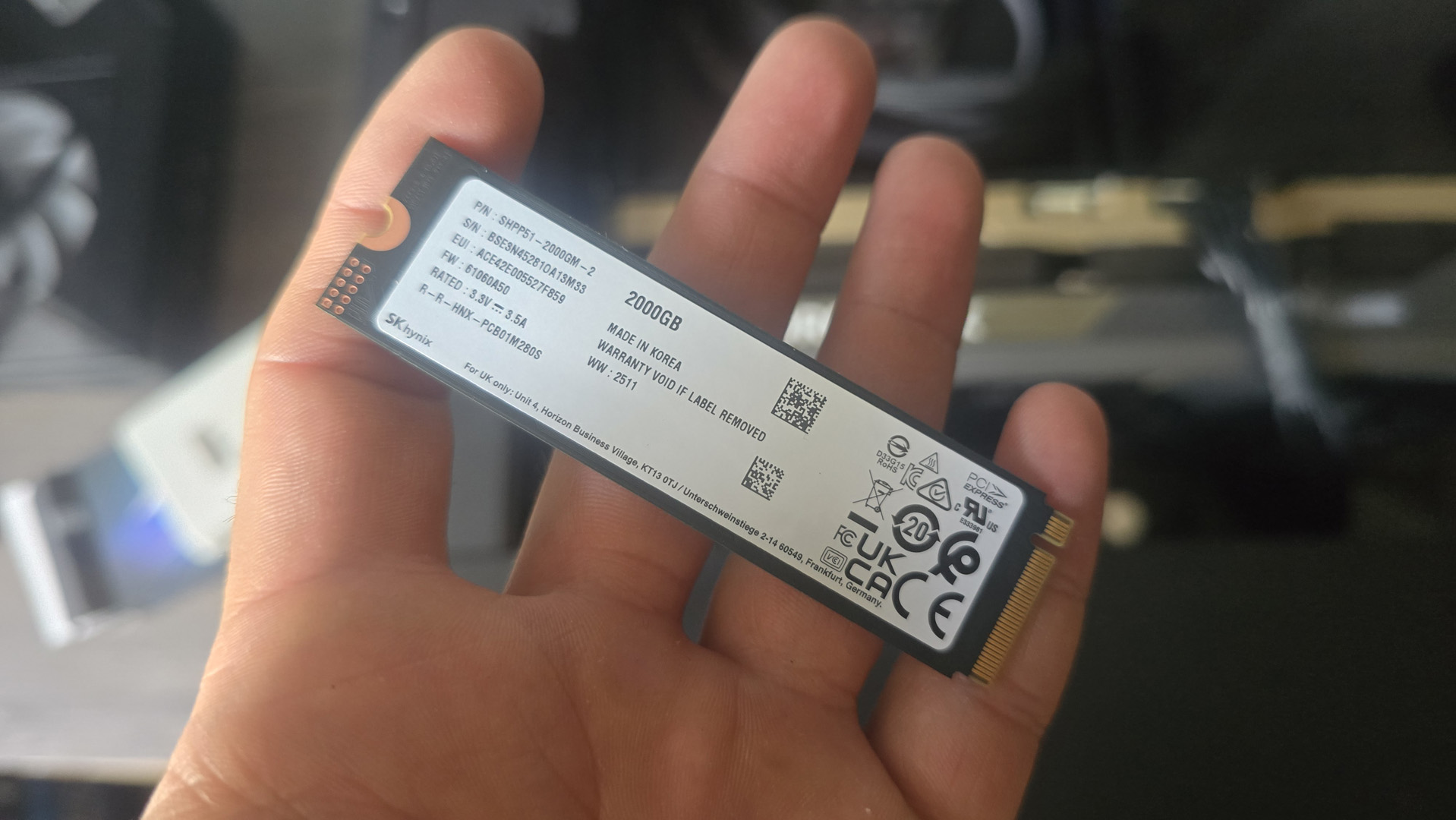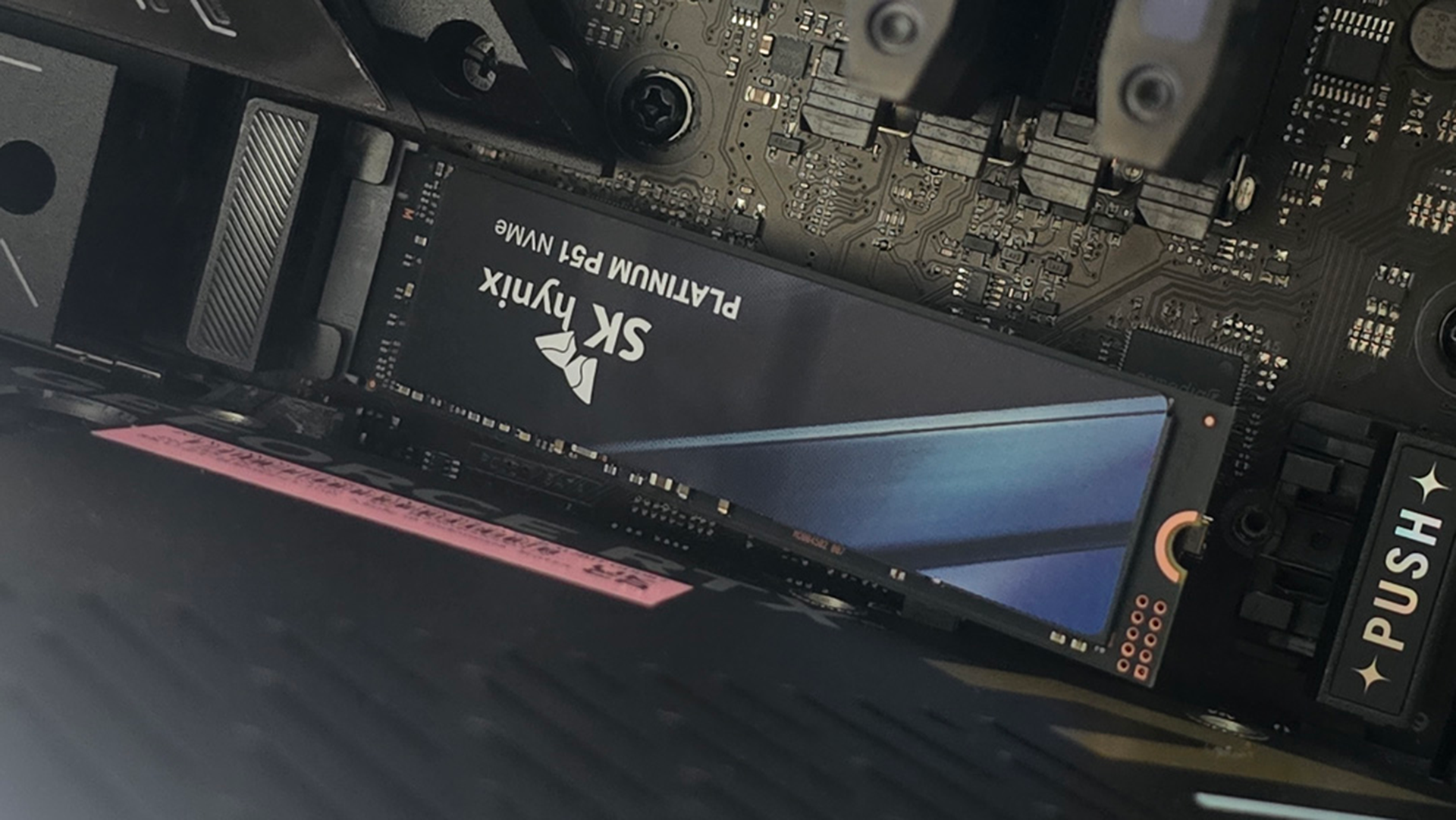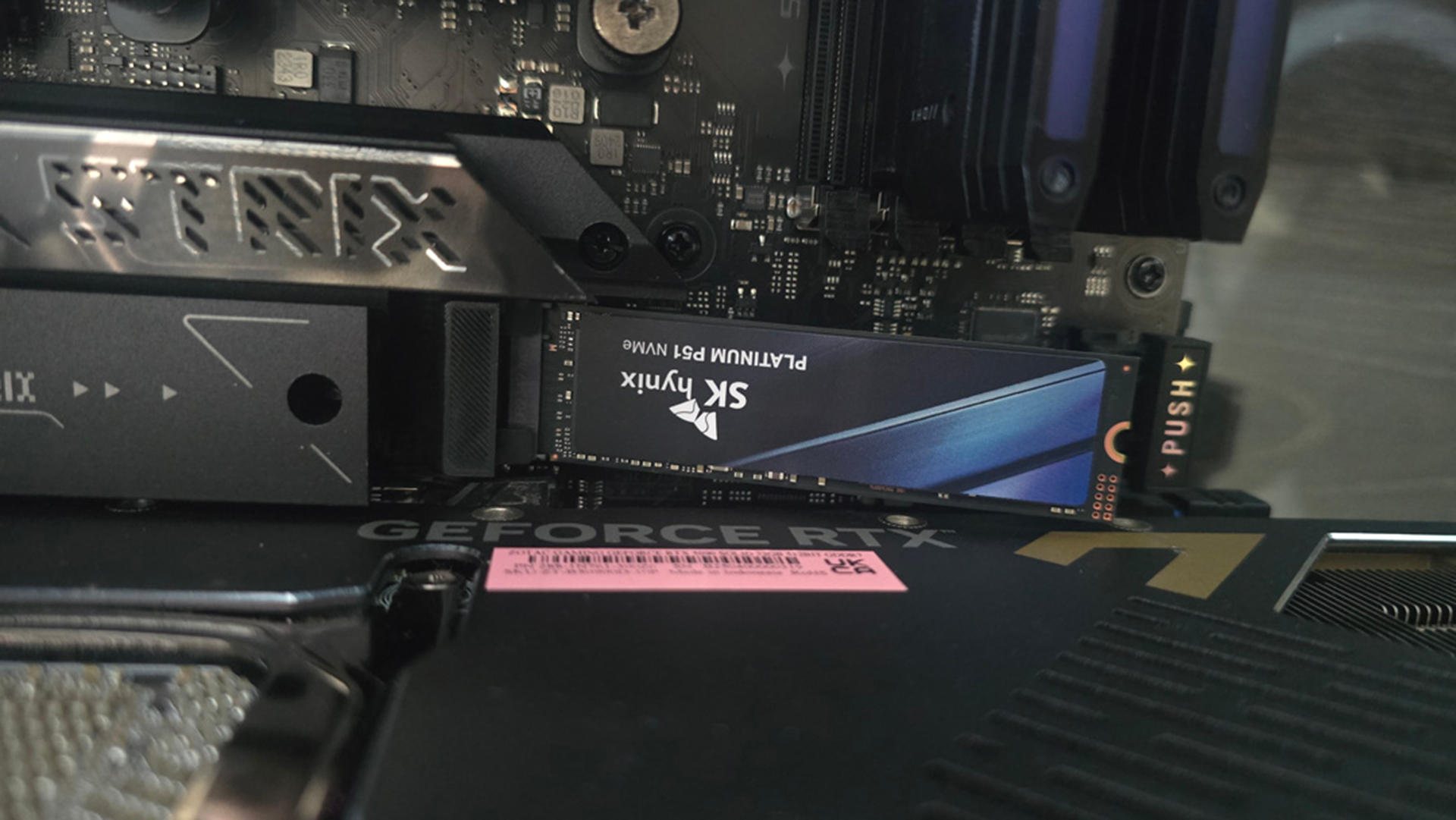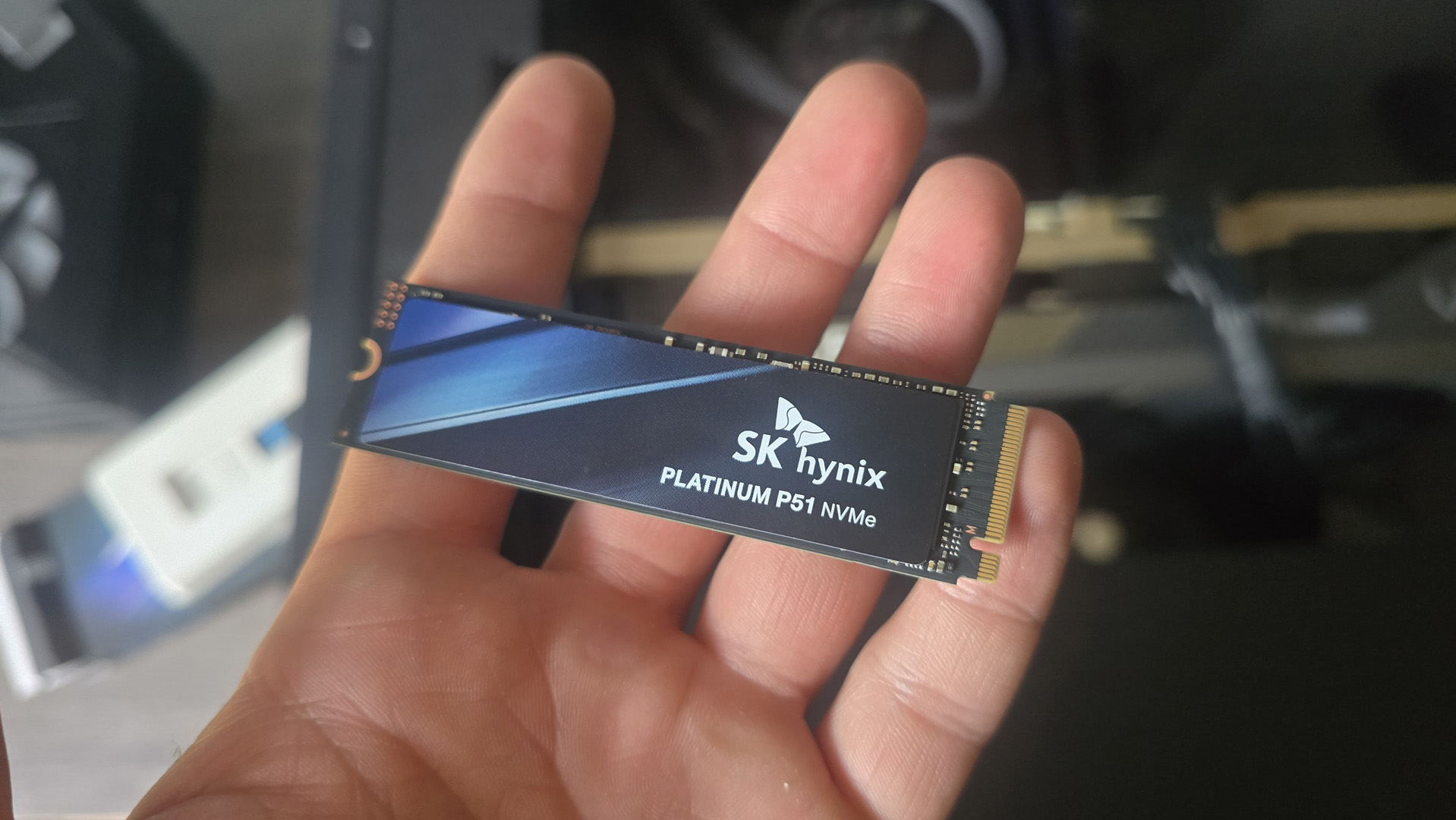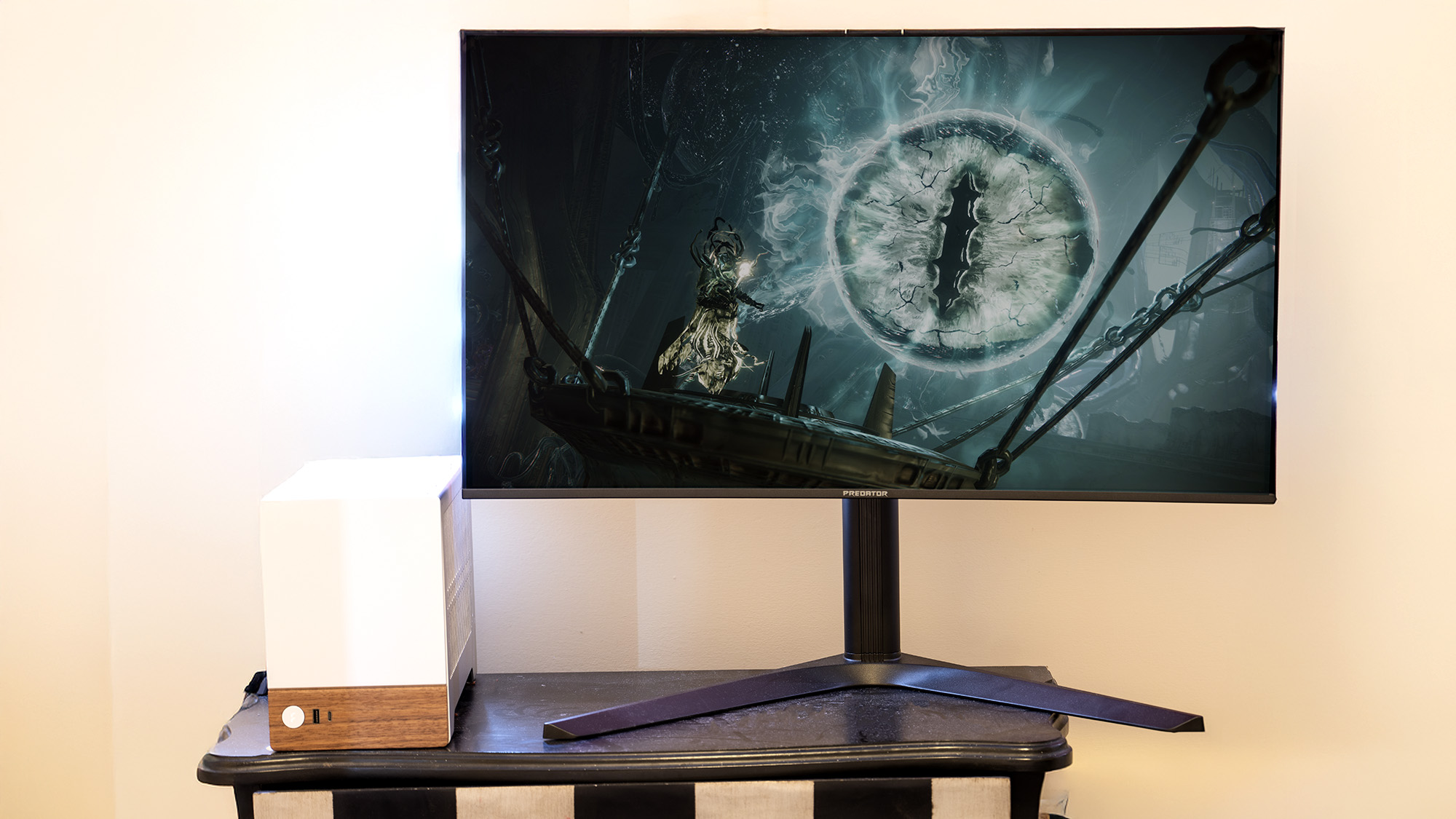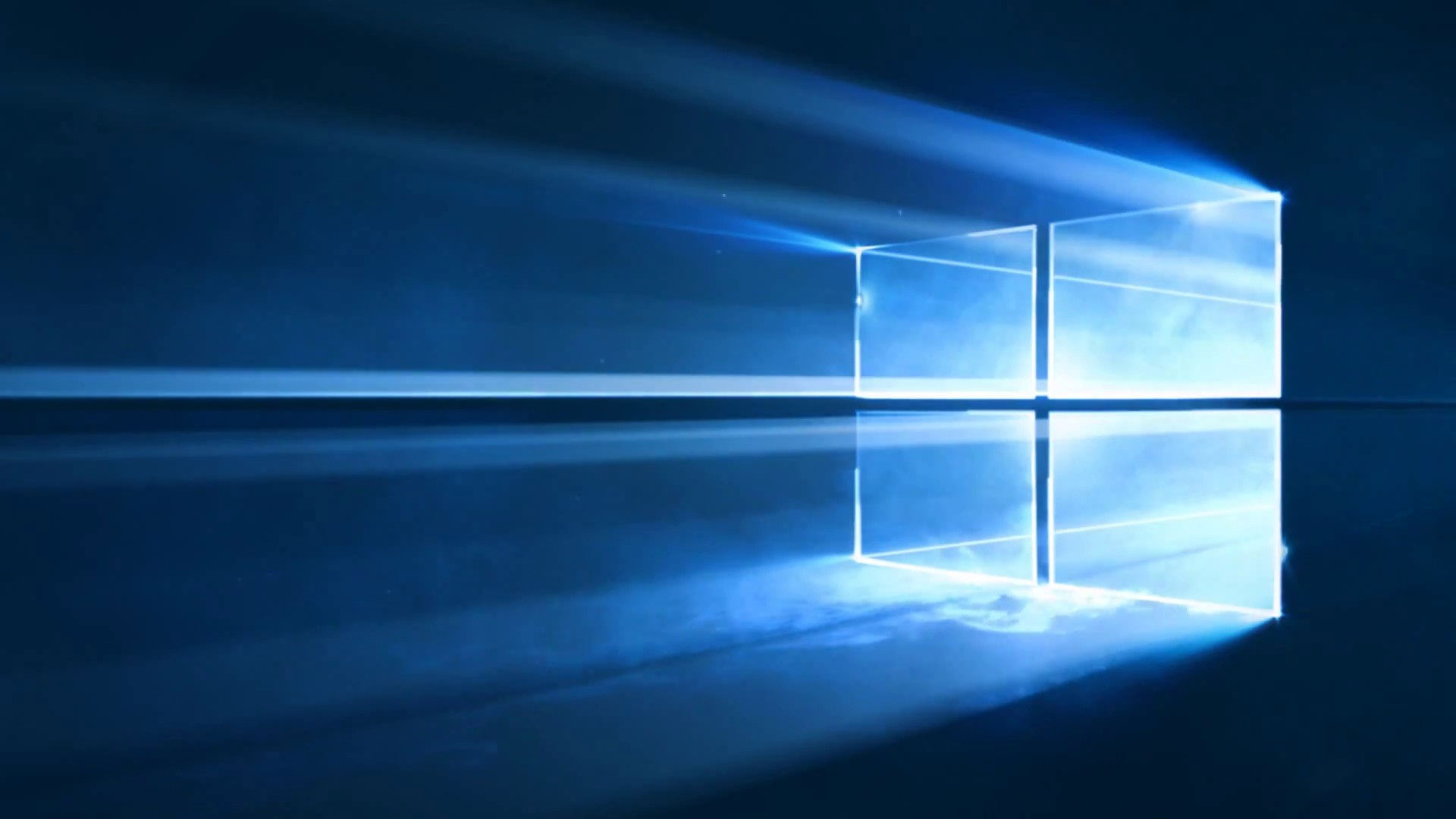
Seriously impressive if only it was a touch more affordable.
I’m very thankful for what Phison has managed to achieve over the last few years. Its controller tech has been incredible, delivering massive gobbets of performance for those in the professional industry. But that doesn’t mean I want its controllers to be the only thing I review for the next five years.
Here’s the thing: challenge brings about evolution. Desperation brings about innovation. And in this industry, when companies have no competition, technological leaps tend to kind of taper off for a bit. At least until someone comes along and upsets the applecart again. Just ask Intel. That hunt, that competition to be the top dog, is exactly what this drive represents. Sticking it to the man and saying, No, sir, Phison, we will not be using your controller.
Ok, enough overly emotive motivational quotes on the boons of competition; this is SK Hynix’s Platinum P51, its first completely in-house-built PCIe 5.0 SSD, and there’s a lot to cover off here.
On the surface it doesn’t look too out of the ordinary. You get that usual M.2 2280 single-sided form factor and roughly similar top-line specs to what we’ve seen other flagship products produce in this arena. SK has its sequentials pegged at around 14,700 MB/s on the read and 13,400 MB/s on the write, and there’s a 600 TBW per TB of capacity endurance rating along with the usual 5-year warranty backing it all up. Capacity availability is pretty sparse, with only 1 and 2 TB options, and the drive I have on review here (the 2 TB) starts at $270 in the US and £310 in the UK, giving us a nice average price of around $0.14 per GB and £0.16, respectively.
Capacity: 2 TB
Interface: PCIe 5.0 x4
Memory controller: SK Hynix Alistar
Flash memory: SK Hynix 238-Layer 3D TLC NAND
Rated performance: 14,700 MB/s sustained read, 13,400 MB/s sustained write
Endurance: 1200 TBW
Warranty: Five years
Price: $270 | £310
The real intrigue surrounding this little SSD is the hardware at its heart. Both the controller and the flash are entirely produced in-house by SK Hynix directly, and we have very little information on them. What I can tell you is the controller does support LPDDR4 as standard, and it must be an eight-channel design to max out that theoretical bandwidth to bring it on par with the likes of Crucial’s T705 and other high-end 5.0 SSDs.
As for NAND SK’s again going solely in-house, utilizing 238-layer 3D TLC to fit the bill, and once more detail on power requirements is sparse, at least beyond what we can deduce from testing. Although it should roughly be on par with Micron’s 276-layer TLC. Still, this gives us a wider variety of NAND and adds another PCIe 5.0 controller onto the marketplace, no doubt ruffling Phison and its E26 controller’s feathers in the process.
So, the good news then is that, across the board, that combination of hardware does indeed lend itself well to the P51. Performance is generally very solid, consistent even compared to the T705 and other drives like it. It’s not perfect though, and although it’s certainly got the potential to contest our best SSD list, it’s not quite there yet.
Let me be clear, this isn’t a WD Black SN8100 killer. That drive holds the top spot, and for good reason. No, it’s not that, but if SK is smart about this and bites the bullet, it could well be the go-to drive for those looking for an affordable alternative that still delivers respectable performance. And that’s the kicker—it’s all down to price.
Before we get there, though, let’s talk numbers. For a first-time 5.0 drive, with a brand-new controller and bespoke NAND, the P51 delivers some solid results. Sequential read tops out at 14,488 MB/s in CrystalDiskMark and 13,121 MB/s on the write. Random 4K equally holds its own with a clean 95 MB/s score on the read and 310 MB/s on the write. That read speed in particular is seriously impressive and clocks it at the second-fastest drive I’ve tested to date for it (the first being the insurmountable SN8100).
Similarly, 3DMark’s Storage benchmark delivers a strong outing too, and although it doesn’t quite beat out the likes of the T705, it does make a mess of Samsung’s latest 9100 Pro as it goes, only really being let down by a somewhat middling access time result.
Perhaps unsurprisingly, then, given those numbers and that strong Random 4K read performance, Final Fantasy’s Shadowbringers benchmark loads in a respectable 6.876 seconds across all three scenes, putting it only slightly behind, you guessed it, the SN8100.
✅ You want a solid all-round SSD: With some of the best random 4K performance we’ve seen, it makes short work of game load times.
❌ You want the best: Although it’s good, it’s not that good. Performance is in line with many other 5.0 drives at this level, and it’s seriously hot too, with an average price.
And then we get to the temperature, and oh boy, is this thing hot, seriously hot. It topped out the charts at 85 degrees Celsius. The only drive I have hotter than that is Crucial’s original T700, with its own integrated heatsink. Given that this thing is underneath the motherboard, that is seriously toasty, and SK doesn’t have a heatsink variant of this drive either, so if you do intend on buying it, make sure you’ve got a motherboard heatsink that can handle it; otherwise, you might be in for a nasty time under heavy sequential workloads.
So. Decent all-around performance, but not great; fast load times, but not the fastest; good access time, but not the quickest; it’s hot, and price-wise it’s kind of where you’d expect a drive of this caliber to sit. Why the high hopes then? Because this is a launch price, and consistently launch prices tend to drop rather rapidly. Given SK is manufacturing both the controller and the NAND in-house, there’s no middleman getting involved here taking a cut. If anyone is capable of dropping the price of a drive, it should be SK.
If it’s smart, it’ll take a look at the market, see where this drive sits, and proactively slash that RRP by $20 or $30. That’s all it would take, and all of a sudden the P51 stops being a pretty average SSD and instead becomes a massively competitive, high-performing storage solution that’s far cheaper than any of its competition can compete with. For now, though, it’s just another SSD.
